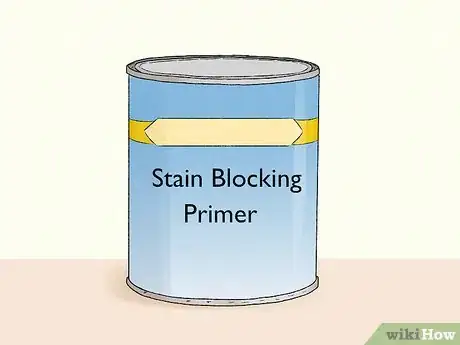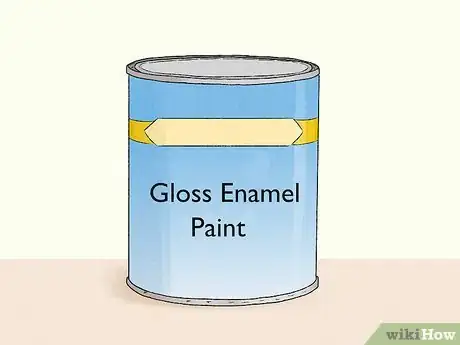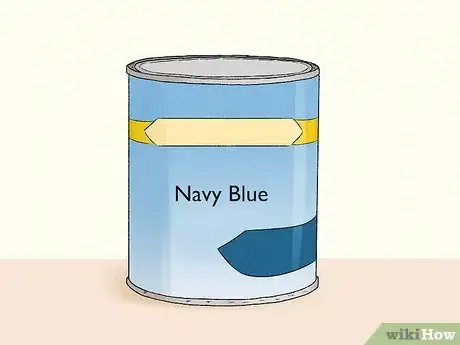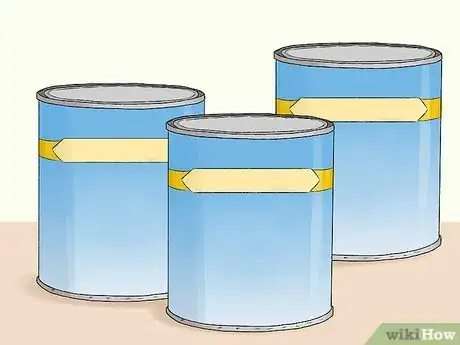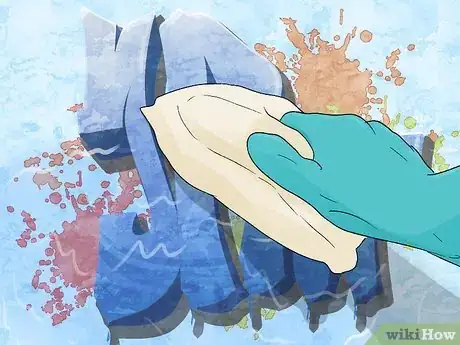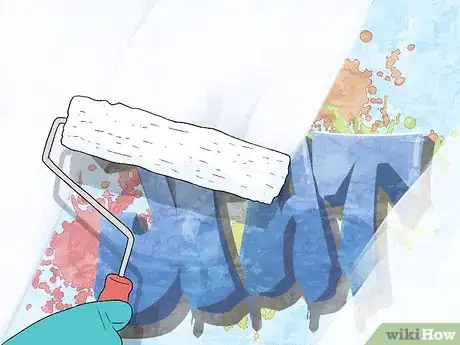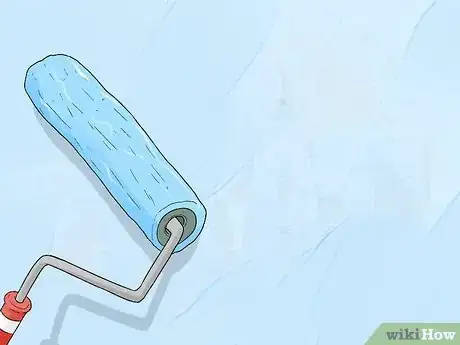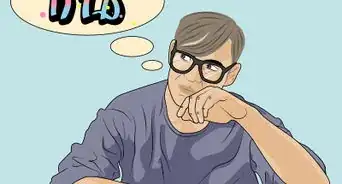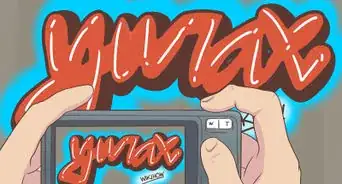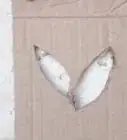This article was co-authored by Archie Guerrero. Archie Guerrero is a Commercial and Residential Painting Specialist and the Operations Manager for DGP Painting in Austin, Texas. With a decade of experience, Archie specializes in interior and exterior painting and staining, cabinet refinishing, and wallpaper and popcorn removal. DGP Painting offers clients environmentally friendly paint materials and top-of-the-line paint products. DGP Painting has an A+ rating with the BBB and has been in Austin’s “Best of the Best.”
This article has been viewed 11,505 times.
Graffiti can be a real nuisance, especially if your business or building gets tagged. Property owners deal with this kind of vandalism all the time, so lots of people know what you're going through. Fortunately, you can cover this eyesore without too much trouble. There are many ways to strip or remove graffiti entirely, but generally the easiest and cheapest method is simply painting over it. By choosing the right paint and prepping the surface correctly, you can cover graffiti entirely for a fresh start.
Steps
Choosing the Right Primer and Paint
-
1Get a stain-blocking primer so the graffiti doesn't soak through. Stain-blockers absorb older paint and prevent it from bleeding through a new coat.[1] You can find this primer type at standard hardware and paint stores.[2]
- While using the right primer is always important, this is especially important if you’re using a lighter color like tan to cover the graffiti.
- Light paint colors like white or baby blue probably won't cover the graffiti well. If you do want to repaint the wall with a light color, then you’ll probably have to remove the graffiti completely first. You can either power wash it off or use chemical removers to strip the paint.
-
2Choose a glossy enamel paint to resist future graffiti. Glossy paints are harder to stick to, and future graffiti will wash off easier. They're also more durable and are usually used on outdoor surfaces. Use this type of paint so if the surface gets tagged again, you can wash it off instead of repainting the whole thing.[3]
- You can find enamel paint at a standard hardware or paint store.
- This is a better choice if you're covering a large area instead of just spot-treating. Glossy paint in one small spot won't do a lot to fight graffiti in the future.
- Spray paint doesn't work well for covering graffiti because it's tough to cover a large surface with it, and the graffiti might bleed through. Latex, or water-based paint, is also not as durable and won't work well for outdoor surfaces.
Advertisement -
3Match the new paint with the old base color if it's dark. If you can perfectly match the coverup paint with the base color, then your job will be a lot easier. Dark base colors are the easiest to paint over. It’s best if you still have some of the old paint on hand. If not, try to get a matching color from the hardware store.[4]
- If you aren't sure exactly what color the base paint is, get a few samples or swatches to hold up to the wall and compare.
- Do not cover the graffiti with a different color than the base color. Officials agree that patchwork using different colors invites more graffiti in the future.[5]
-
4Switch to a darker paint if the current color is tan or white. If the base color was very light, like white or tan, then covering the graffiti with the same color probably won’t work. The darker graffiti will bleed through the new paint, even if you apply multiple coats. In this case, switch to a darker color like black. This will cover the graffiti without any bleed-through.[6]
- Darker colors like brown or black are usually the easiest to color-match and repaint, so these are good choices if you’re in a very graffiti-prone area.
-
5Buy an extra can in case you have to cover more graffiti in the future. Since color-matching is very important, it helps to have some of the new paint you use on-hand in case you need it in the future. That way, if the surface gets tagged again, you can just cover that spot instead of repainting the whole thing.[7]
- If you don't keep extra paint around, at least note the exact color and manufacturer of the paint so you can get more if you have to.
- Keep in mind that manufacturers sometimes change or discontinue color lines. This is why keeping an extra can around is better than just making note of the color.
Painting over the Graffiti
-
1Clean the surface with water and soap. The new paint won’t stick as well if there is any dirt or grease on the surface. Mix water and some dish soap, then use a rag, brush, or roller to wash the surface. Let it dry completely before you paint.[8] [9]
- If the surface is large and you can’t reach it all, a power or pressure washer might be a better choice.
- You could also just hose down the surface. This isn’t as good as a full wash, but it’s better than nothing.
-
2Prime the area so the graffiti doesn't show through the new paint. Priming blocks the graffiti from bleeding through the new coat of paint and also helps the paint stick better. Brush or roll on an even coat of stain-blocker primer to cover the whole surface that you’ll be painting.[10]
- Wait for the primer to dry completely before painting. For most primers this is about 3-4 hours, but check the instructions on the product that you use.
- If you’re using a very dark paint, like black, then you probably don’t have to use a stain-blocker. However, still prime the wall before painting.
-
3Cover the graffiti section if you can match the colors perfectly. If you can match the new paint with the base paint, then you can just paint over the graffitied section. Paint a square border around the graffiti. Then roll or brush the new paint over the graffiti. Apply an even, smooth coat to cover it entirely.[11]
- Do not do this with 2 different colors. A section with different colors invites new graffiti.[12]
- If you start painting and realize that the colors don’t match as well as you thought, then you might have to repaint everything. Wait for the paint to dry and see how well the colors match before making a decision.
-
4Repaint the entire area if you’re using a new color. If you can’t match the colors, then it’s best to repaint the whole surface instead of just covering the graffiti.[13] Pour the new paint into a tray and dip a brush or roller in. Then cover the entire surface, graffiti and all, with the new paint.[14]
- For large surfaces, like the side of a building, you may need a professional painting service.
- If you have to reach high areas, be very careful when using a ladder. Don’t stand on the top step and make sure the ladder is secure before climbing up.
-
5Apply an additional coat if the graffiti is still visible. Let the paint dry for 3-4 hours, then check if you can still see any graffiti bleeding through. If so, then cover it with another coat of paint.[15]
- Your paint may need additional drying time, depending on the type. Check the instructions on the paint you use.
Expert Q&A
-
QuestionCan you just paint over the graffiti?
 Archie GuerreroArchie Guerrero is a Commercial and Residential Painting Specialist and the Operations Manager for DGP Painting in Austin, Texas. With a decade of experience, Archie specializes in interior and exterior painting and staining, cabinet refinishing, and wallpaper and popcorn removal. DGP Painting offers clients environmentally friendly paint materials and top-of-the-line paint products. DGP Painting has an A+ rating with the BBB and has been in Austin’s “Best of the Best.”
Archie GuerreroArchie Guerrero is a Commercial and Residential Painting Specialist and the Operations Manager for DGP Painting in Austin, Texas. With a decade of experience, Archie specializes in interior and exterior painting and staining, cabinet refinishing, and wallpaper and popcorn removal. DGP Painting offers clients environmentally friendly paint materials and top-of-the-line paint products. DGP Painting has an A+ rating with the BBB and has been in Austin’s “Best of the Best.”
Commercial & Residential Painting Specialist You can, but it will still be noticeable. If you want to make it less noticeable, you have to paint the entire wall, corner to corner. You see, when the paint dries, it makes one continuous film. If you only paint a patch over the graffiti, the new painting will have a noticeable edge, even if it’s the same color as the rest of the wall.
You can, but it will still be noticeable. If you want to make it less noticeable, you have to paint the entire wall, corner to corner. You see, when the paint dries, it makes one continuous film. If you only paint a patch over the graffiti, the new painting will have a noticeable edge, even if it’s the same color as the rest of the wall.
Things You’ll Need
- Glossy enamel paint
- Stain-blocker primer
- Paint brush or roller
- Sponges
- Hose
Warnings
- If a surface has been repainted 2-3 times, then you may have to power wash or chemically remove the current paint before putting down another coat. Too much paint could damage the surface.⧼thumbs_response⧽
- If you see any cracks or damage on the surface, don’t repaint it. Instead, bring in a contractor to inspect the surface and repair it if necessary. Repainting over damaged surfaces could be dangerous.[16]⧼thumbs_response⧽
References
- ↑ Archie Guerrero. Commercial & Residential Painting Specialist. Expert Interview. 17 June 2021.
- ↑ https://city.milwaukee.gov/GraffitiRemoval
- ↑ https://www.winchesterva.gov/sites/default/files/documents/planning-zoning/Forms/graffiti-brochure-2016.pdf
- ↑ https://www.cityofnampa.us/DocumentCenter/View/124/Graffiti-Rapid-Removal-?bidId=
- ↑ https://www.minneapolismn.gov/resident-services/garbage-recycling-cleanup/graffiti/
- ↑ https://www.cityofnampa.us/DocumentCenter/View/124/Graffiti-Rapid-Removal-?bidId=
- ↑ https://city.milwaukee.gov/GraffitiRemoval
- ↑ Archie Guerrero. Commercial & Residential Painting Specialist. Expert Interview. 17 June 2021.
- ↑ https://city.milwaukee.gov/GraffitiRemoval
- ↑ https://city.milwaukee.gov/GraffitiRemoval
- ↑ https://www.goodyearaz.gov/government/departments-divisions-a-z/development-services/code-compliance-division/graffiti
- ↑ https://www.goodyearaz.gov/government/departments-divisions-a-z/development-services/code-compliance-division/graffiti
- ↑ Archie Guerrero. Commercial & Residential Painting Specialist. Expert Interview. 17 June 2021.
- ↑ https://www.cityofnampa.us/DocumentCenter/View/124/Graffiti-Rapid-Removal-?bidId=
- ↑ https://www.cityofnampa.us/DocumentCenter/View/124/Graffiti-Rapid-Removal-?bidId=
- ↑ https://www.cityofnampa.us/DocumentCenter/View/124/Graffiti-Rapid-Removal-?bidId=
